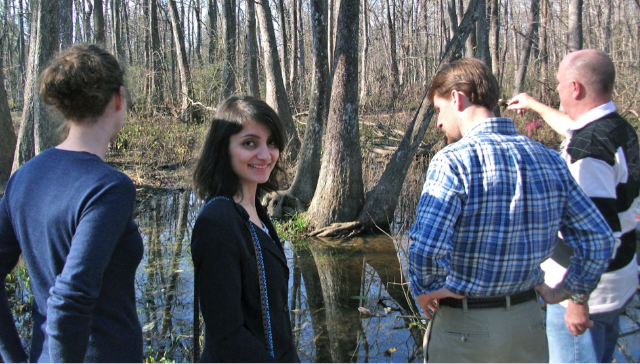We just did an amazing walking tour through the free service provided to visitors in Seoul. The tour took us through the area known as Seochon, which consists of traditional Korean homes, modern art galleries and some older Japanese homes.
After that, we went through the Tongui-dong village. The Tongui-dong Hanok Village was a traditional Korean village in Seochon was home of several famous historical figures including "Gyeomjae" Jeongseon and "Chusa" Kim Jeonghee during the Joseon Dynasty; and painters Yi Jung-seop and Yi Sang-beom and poets Yun Dongju and Yi Sang in modern times. Most of the remaining hanok are "gaeryang hanok", which were largely constructed after the 1910s according to a government housing plan.
There are parts of this area that have been converted into commercialized areas, but the neighborhood, as a whole, retains its traditional aesthetic. There are some quaint homes converted to cafes and bistros. The village also lies at the base of the Inwang Mountain, which isn't particularly high, as it is green.
Continue further and you will see one of Korea’s traditional markets, with some delicious food. Tong-in Market, lies outside the Sechon village, and you can sample a wide selection of Korean cuisine, from dubu buchim (pan fried tofu) to various types of jeon (savory pancakes). You can buy tokens for 5,000 won.
We also came across the Park No-soo Art Museum, the impressive red-brick home of the renowned Korean painter Park No-soo. It was donated to Jongno District Office, along with his private collection, and since then, has since become a museum open to the public.
There is another well-known place we haven't visited because we don't like chicken soup. Its Tosokchon Samgyetang, a food place serving ginseng chicken soup. Its known to be khealthy, and made of young chicken, glutinous rice, gingko nuts, ginseng, garlic and jujube, as well as 30 different types of medicinal herbs and grain.On the other side of Seochon in Ogin-dong, there's a house tucked away at a cul-de-sac. This is the home of Lee Sang-beom. He was a landscape artist from (1897–1972).
We ended our trip at Sajik Park was built around the Sajikdan, a stone altar that was erected in 1395 by King Taejo, the founder and the first king of the Joseon Dynasty. It was built to worship the gods of the Earth and harvest and rites wishing for a good harvest were held regularly there.

The Seochon village is located to the west of Gyeongbokgung Palace, which you can't miss at Gwanghamun. It was home to the middle class during the Joseon Dynasty and some of Korea's most important modern cultural figures. It's surprising that the middle class referred to doctors, engineers and diplomats, who are now upper class.
We met at the Gyeongbokgung Station and went behind an alleyway and came to the site of the Tongui-dong Baeksong (White Pine Tree).
This is a historical tree, or what remains of it. You can basically see a thick trunk, where once a baeksong (white pine tree) stood in the neighborhood of Tongui. Now, only a few of this variety of pine tree grow in Korea, and this particular baeksong was once the largest in the country and was designated as a natural monument. It was destroyed in a typhoon after which it was sadly, no longer a natural monument. Next to the tree was a painting by a famous artist.
This is a historical tree, or what remains of it. You can basically see a thick trunk, where once a baeksong (white pine tree) stood in the neighborhood of Tongui. Now, only a few of this variety of pine tree grow in Korea, and this particular baeksong was once the largest in the country and was designated as a natural monument. It was destroyed in a typhoon after which it was sadly, no longer a natural monument. Next to the tree was a painting by a famous artist.
There are parts of this area that have been converted into commercialized areas, but the neighborhood, as a whole, retains its traditional aesthetic. There are some quaint homes converted to cafes and bistros. The village also lies at the base of the Inwang Mountain, which isn't particularly high, as it is green.
Continue further and you will see one of Korea’s traditional markets, with some delicious food. Tong-in Market, lies outside the Sechon village, and you can sample a wide selection of Korean cuisine, from dubu buchim (pan fried tofu) to various types of jeon (savory pancakes). You can buy tokens for 5,000 won.
We also came across the Park No-soo Art Museum, the impressive red-brick home of the renowned Korean painter Park No-soo. It was donated to Jongno District Office, along with his private collection, and since then, has since become a museum open to the public.
There is another well-known place we haven't visited because we don't like chicken soup. Its Tosokchon Samgyetang, a food place serving ginseng chicken soup. Its known to be khealthy, and made of young chicken, glutinous rice, gingko nuts, ginseng, garlic and jujube, as well as 30 different types of medicinal herbs and grain.On the other side of Seochon in Ogin-dong, there's a house tucked away at a cul-de-sac. This is the home of Lee Sang-beom. He was a landscape artist from (1897–1972).
We explored his journal and home, all well preserved.
We ended our trip at Sajik Park was built around the Sajikdan, a stone altar that was erected in 1395 by King Taejo, the founder and the first king of the Joseon Dynasty. It was built to worship the gods of the Earth and harvest and rites wishing for a good harvest were held regularly there.












